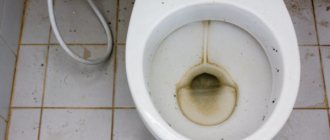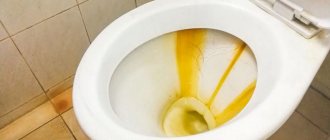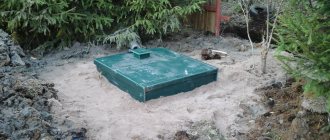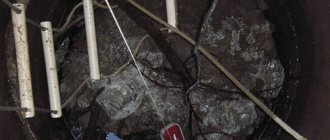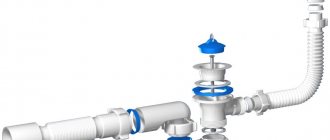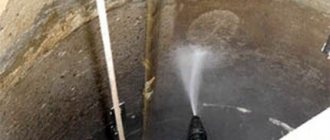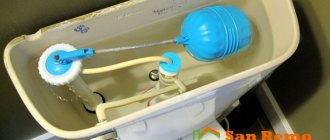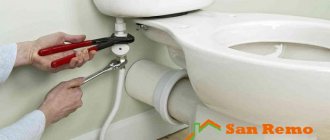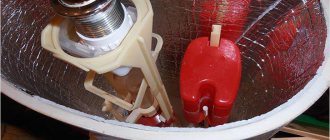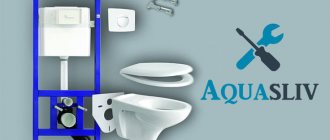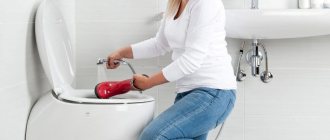Cleaning plumbing fixtures is a mandatory set of regular measures to maintain cleanliness and safe use of products. Limescale, rust and urinary stone on the surface of the toilet do not appear within one day. The editors of the Plumber Portal will tell you about ways to clean the toilet from dirt using the 10 most effective cleaning products.
How to properly clean a toilet: basic tools
These tools will help you clean the toilet quite quickly:
- brush - it is better to take it with double bristles or separate attachments, one of which can be used specifically for the rim;
- sponge - it should be hard, and it should be used only for washing the toilet, without treating other surfaces;
- pumice – models on a stick are very convenient, but they cannot be used for colored toilets;
- a mask and gloves are necessary, since household chemicals can cause irritation on the skin, and it is undesirable to inhale the toxic substances contained in them.
Household chemicals
Special effective products for making plumbing fixtures white, namely for cleaning the toilet, are purchased in hardware departments or in household chemical stores. The range includes:
- white;
- powders;
- liquids;
- gels;
- creams;
- tablets for the tank.
White
To treat with whiteness, you need to prepare the device: drain all the water from the bowl and neck. Pour 1 liter of the substance inside, close the toilet lid and leave overnight.
Powders
The loose abrasive base and disinfecting properties of Komet allow you to get rid of plaque and rust in a short time. After pouring the mixture onto the dirty places, you need to rub the surface, let the substance work for 15-20 minutes and press the drain button. Doesn't work well with old stains.
Advice from professionals
Cleaning and disinfecting the toilet requires contact with aggressive components such as chlorine and acid. These substances cope well with the problem, but can harm the health of the owner.
You can avoid this if you follow simple rules:
Before cleaning, ensure the room is ventilated: turn on the hood, open doors and windows, if any. After the procedure, the toilet room also needs to be ventilated.- Empty the shelves, take out the excess: air fresheners, hygiene items, towels, soaps and gels.
- Clean only wearing protective equipment, protect your hands with rubber gloves, and protect your upper respiratory tract with a mask or respirator.
- Do not bend low over the toilet when cleaning, do not sniff detergents and disinfectants to avoid contact of aggressive substances with the skin, mucous membranes, eyes, and harmful vapors in the respiratory system.
- Before use, carefully study the instructions on the product label, do not mix incompatible components, and do not exceed the recommended dose.
Rags, sponges, brushes that were used to clean the toilet should not be used under any circumstances to clean other rooms in order to avoid the spread of pathogenic bacteria.
Basic cleaning methods
As a rule, there are 2 main causes of contamination - urinary stone and limescale. These two problems can be dealt with effectively.
Limescale
The increased content of minerals in the water used for drainage contributes to the formation of limescale. In large quantities, it clogs the holes from which water flows during drainage. You can fix the problem using special means or folk methods if you don’t have time to go to the store:
- Treat areas of plaque formation with baking soda or soda ash. It’s better to leave it overnight, and the next day just drain the water and go over the surface of the toilet with a brush. Add baking soda to any product to make it more effective.
- To clean the headband, sprinkle oxalic acid underneath it. These small crystals do an excellent job of removing plaque. It can also be diluted with alcohol or mixed with water in a 1:1 ratio.
- Sprinkle citric acid onto the plaque area overnight and drain the water in the morning. This product dissolves lime deposits perfectly.
- Coca-Cola will help remove rust and limescale - you just need to apply it to dirty areas.
Also use special products that effectively combat limescale. For example, these are products from the brands Cillit, Bref, Domol. Regular white is suitable; it should be applied to dirty areas and left for a couple of hours, then rinsed off using a brush. Automotive electrolyte also works great and effectively fights plaque.
Usually the packaging indicates what properties the product has. After application, do not forget to wash your hands, because many substances are very active and cause irritation, including chemical burns. If the product gets on the skin, it is better to wash the area with water without using soap. In the future, you do not need to apply any creams, and you should not rub the damaged area.
Urine stone
When the drain is poor and insufficient to remove urine residues, they are deposited on the surface of the toilet, forming urinary stones. Home remedies that are also effective for limescale will help you cope with it: vinegar, citric acid, soda and even regular Coca-Cola. But for severe contamination, household chemicals will work best: Comet, Dosia, Domestos. It is recommended to have at least one of these cleaning products in your home to immediately eliminate the problem as soon as it arises:
- Drain the water. It is important that the surfaces you will be treating remain dry. Most products are toxic, so it is better to wear a special mask and gloves.
- Take any product whose instructions indicate that it helps remove urinary stones. These are Domestos, Toilet duckling, Bref, Frosch. Apply to dirty areas and leave for 1-2 hours. Drain the water by running a brush over the surface.
You may need to wash the toilet bowl to remove yellow deposits several times, because urinary stone is strongly embedded in the surface.
Causes of plaque
Limescale (or water stone) is formed from calcium and magnesium salts found in water. These are plaques and yellow-orange stains that appear in flush areas, on the bottom of the toilet, under the rim and even on the lid. The more time passes between scheduled cleanings, the thicker the layer of deposits and the more difficult it is to clean them. You also need to regularly clean the tiles, bathtub or shower stall to remove limescale deposits.
Urine stone is the result of sedimentation of minerals contained in the urine. If you periodically forget to rinse off the water, unsightly streaks form on the walls, and then the stone turns gray-yellow.
The appearance of deposits is also promoted by:
- hard water,
- cracks and irregularities on the surface
- leaking tank
Attention! In addition to its unaesthetic appearance, stone in the toilet bowl is a source of unpleasant odor and a favorable environment for bacteria.
You can clean the toilet from limescale and urinary stone using improvised means that can be found in any home. In particularly advanced cases, if the toilet is old or has not been cleaned for a long time, you will have to resort to aggressive chemicals.
How to get rid of plaque using folk and chemical means?
A few more recipes that will increase cleaning efficiency:
- Citric acid fights any pollution. Especially if they have not yet ingrained themselves into the surface of the toilet - otherwise you will have to use stronger chemicals. You need to pour citric acid onto contaminated surfaces and leave for at least 1-2 hours. Then rinse off the water and lightly scrub the surface of the toilet with a brush.
- Vinegar combined with baking soda works great for heavy stains. To do this, 250 g of vinegar are mixed with a liter of water and slightly heated under a lid so that the smell does not spread throughout the room. The optimal temperature is 50 degrees. For greater efficiency, you can add soda (5 tbsp.). The resulting product is used to clean the toilet. You can also apply it and leave it overnight and drain the water in the morning.
- Oxalic acid is a cheap, simple remedy that will help remove urinary stones and other deposits. You need to wipe the toilet and apply acid to dirty surfaces. After an hour, you can drain the water and treat everything with a brush.
- Phosphoric acid can be used to clean the toilet itself and the tank. They simply pour it inside and wait for about 1-2 hours. To remove heavy stains, it is better to leave the product on overnight.
- Whiteness works the same way. But when using it, you need to close the door to the toilet, because the smell will spread throughout the rooms, and it is toxic. In addition to bleach, you can use other products containing chlorine, but use gloves and a mask. Be sure to ventilate the house after completing the manipulations. Whiteness can effectively fight mold, which often appears in the summer or with poor ventilation.
- Hydrochloric acid is used similarly to soda. But it is more aggressive and can cause burns on the skin. Therefore, be sure to wear gloves before use. Hydrochloric acid also dissolves plastic and rubber. Therefore, it is important to make sure that it does not get on the toilet parts made from these materials.
What to do if cleaning the toilet is impossible
There are many reasons why it is impossible or difficult to clean a toilet. For example, there is no access for special equipment, nowhere to dispose of waste, and a lonely elderly person lives in the dacha who cannot cope with complex physical work.
The only way out is folk remedies:
- Sawdust will help eliminate the smell. The filler is periodically sprinkled with feces inside the cesspool. It absorbs liquid and, when overheated, forms fertilizer. Sawdust from ordinary deciduous trees or rotten old boards will not work. The material is harvested from coniferous or fruit trees that have aromatic properties. The disadvantage of this method is filling the hole. Over time, it will still have to be cleaned.
- Nettle perfectly eliminates the bad smell of feces. A bunch of fresh greens are thrown into the cesspool once a week. During this time, the nettle completely decomposes. The advantage of this method is that the contents of the pit do not increase quickly, as is observed with the use of sawdust.
- A good neutralizer for sewage odors is tomato tops. In addition, aromatic substances repel flies and other insects from the toilet. There is no need to specifically destroy tomatoes. They use leaves and shoots that are removed during the formation of bushes.
- Spicy herbs help get rid of bad odors. Usually mint is used along with basil. Plants are distributed in almost all dachas. There will be no problems with the search. A bunch of greenery is similarly thrown once a week.
- Similar to sawdust, peat is a good filler. It tends to absorb bad odors and liquids. Peat is periodically sprinkled with sewage. Over time, compost forms inside the pit, which is stored in a designated place for ripening.
There is another effective way to solve the problem with the toilet. If it is impossible to clean it, a new cesspool is dug in another place. The toilet stall is simply moved. The old overflowing pit is covered with earth.
Video about ways to care for the toilet:
How to tidy up the drain tank?
You need to clean the tank as often as the toilet itself, otherwise the water will not drain well, which will lead to contamination of the entire surface and the appearance of deposits. For effective cleaning, the following is possible:
- Remove the cap from the tank. In older models this can be easily done. Options with a vertical rod will require more effort and time. You need to pull it up and twist the thread. After this, the cover will be removed. If the toilet is a push-button one, you need to press the button and twist the shiny part to the left until it moves away from the base.
- Press the valve and drain the water. Then close it, pour in cleaning agent and refill the tank. It is advisable to leave everything for 8-12 hours and not use the toilet. It is recommended to perform such manipulations before bed so that the contaminants dissolve overnight. Remember, if there are plastic or plastic parts inside the tank, hydrochloric acid and electrolytes cannot be used - they will corrode these materials.
- If you don’t have special products on hand, you can use soda or Coca-Cola. They are left to act for 2-3 hours and then washed off with water. Surprisingly, Coca-Cola helps remove even the most severe plaque.
- After all the manipulations, the water drainage will be the same.
Any cleaning takes less time if done regularly. But if persistent stains appear on the surface of the toilet, removing them is also not difficult - now you know how to do it!
Getting rid of condensation on pipes
The reason for its appearance is the difference between the temperature in the room and the water that enters the tank. The problem can also be caused by excessive humidity in the room, a faulty drain, or too frequent use.
Ways to fix the problem:
- carry out repairs, insulate walls or replace the tank;
- eliminate excess moisture in the room (checking and adjusting ventilation, installing a dehumidifier);
- change the temperature of the water entering the drain (provide warm water, insulate pipes, install a boiler, adjust partial flush).
You can find out how to remove condensation from a toilet tank here, and from cold water pipes in the toilet - here.
Briefly about the main thing
Owners of outdoor toilets have the opportunity to choose one or another cleaning method based on its effectiveness, cost and convenience in each specific case. Traditionally, calling a sewer truck or doing manual cleaning on your own is common.
Alternative methods of wastewater treatment include the use of bio- and chemicals. All of them successfully cope with waste recycling, but the conditions of their use and the results of their activities are somewhat different. Some measures turn out to be complex and costly, but you don’t have to resort to them often, which somewhat compensates for the hassle.
Ratings 0
General information
During the hot season, the process is aggravated by the fact that organic waste begins to rapidly ferment. The rapid development of microorganisms and their vital activity is accompanied by the release of toxic gases. It is impossible to get rid of them as long as the toilet pit is overflowing. In addition to the air, bacteria infect the soil at the dacha and penetrate growing vegetables, root vegetables, and salad greens. When microorganisms enter the human body with food, they cause infectious diseases.
How to clean a toilet in your country house with your own hands quickly and effectively? There are several ways. Note that the frequency of such “general cleaning” depends both on the dimensions of the cesspool and on the frequency of its operation. The “country house of an unknown architect” is installed as far as possible from residential areas. It is usually built in the backyard or at the very end of the vegetable garden.
When the contents fill the hole to a critical level, an unbearably nasty smell will begin to indicate a problem. The toilet becomes unusable.
